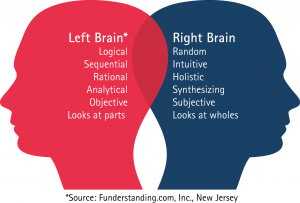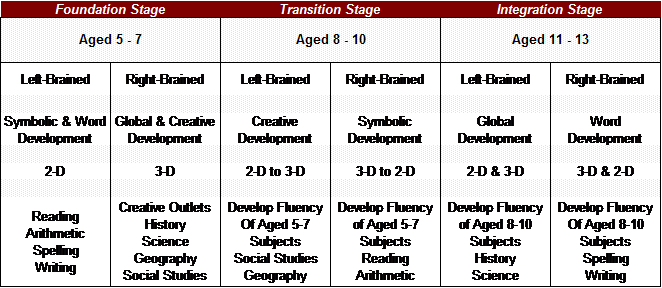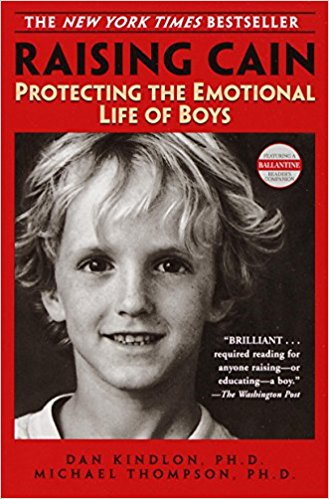The Creative Learning Center will allow the natural bend of each student to guide his or her educational path. By working with the brain development for processing information of every child, it will reveal their strengths, their preferred learning style, and their gifts and interests. By nurturing this, every young person will learn joyfully in the way that works best for them, while strengthening their gifts.
Recognizing Cultural Conditioning
The first thing we need to sift apart is the difference between our cultural conditioning and actual brain development. Here’s an excerpt explaining this:
Consciously or subconsciously, our society believes that the scope and sequence created for our schools that favors one kind of learner is “the norm.” It’s held up as the measure of intelligence. For example, a current benchmark declares that reading can and should be accomplished through phonics by the age of 6 to 7 years. Around this, parents hold their breath, waiting to discover where their children will be classified. If a child reads before the benchmark, she’s “smart as a whip” or “gifted.” If he reads at the expected time, he’s “average.” Look out if she reads after that time frame! At best, she’s either “lazy,” “not living up to potential,” or “stupid.” At worst, the child is disordered. Broken. Learning disabled. The truth is that it’s normal for creative children to learn to read at a later age. The traditional school benchmarks shouldn’t be the only “normal” that children are held to in a scope and sequence. The solution is to allow all children to learn on their own time frame that honors their gifts and strengths. This doesn’t mean we should follow the current traditional school scope and sequence, and then just wait a little longer. It means each learners’ success requires an individual scope and sequence.
- Every child needs individualized resources for learning that matches the way they learn best.
- Every child needs individualized skill development that matches their strengths.
- Every child needs individualized time frames for learning that matches their brain processing patterns.
If all of these differences are honored, other types of learners will understand various subjects as joyfully and painlessly as those who match the traditional school scope and sequence.
Brain Processing Preferences
Additional reading on the simplified idea of the two brain dominance factors of left-brained and right-brained, as it’s applied to brain development in learning can be found here:
I’ll start off taking excerpts (in blue) from my book, The Right Side of Normal, from Chapters Four and Seven to explain the natural learning development for right-brained children using the Learning Stages chart I created.
 Because the left and right hemispheres of the brain are mirror images of each other, each specializing in something different, it makes sense that the educational paths for left- and right-brained learners are opposites of each other. The time frame that schools utilize in teaching various subjects aligns with the left-brained learner stages of learning. I’ve noticed that right-brained learners acquire subject matter in a different learning pattern than their left-brained counterparts.
Because the left and right hemispheres of the brain are mirror images of each other, each specializing in something different, it makes sense that the educational paths for left- and right-brained learners are opposites of each other. The time frame that schools utilize in teaching various subjects aligns with the left-brained learner stages of learning. I’ve noticed that right-brained learners acquire subject matter in a different learning pattern than their left-brained counterparts.
I have identified the time frames of three stages of learning, depicted in the charts below. This chapter introduces the function of each stage while Chapter Seven provides details for the content and subject expression.
You can buy male stamina enhancer supplements – Musli Strong informative site cialis price capsules from reputed online stores using credit or debit card from the comfort of home.
The first stage of learning is called the Foundation Stage because it focuses on the universal gifts and strengths of each learner (see Chapter Five). Left-brained learners are two-dimensional thinkers who focus on symbolic and word development. Right-brained learners are three-dimensional thinkers who focus on global and creative development. For both left- and right-brained learners, it makes sense that learning should build upon one’s strengths for a firm foundation.
The second stage of learning is called the Transition Stage because it’s the beginning of the integration process of the two hemispheric specializations. This is the time when the right-brained learner starts to utilize some of the strengths of the left side of the brain to incorporate two-dimensional thinking. The left-brained learner begins to utilize some of the strengths of the right side of the brain to incorporate three-dimensional thinking. The Moores support my theory of a major shift during this stage in their book Better Late than Early. They say, “Studies have demonstrated a variety of significant changes in brain maturation between ages 7 and 11. Some of these changes are in the brain’s structure, others are in its chemistry and still others in its electrical potential.”
The third stage of learning is called the Integration Stage because the established dominant brain preference increasingly integrates the opposite brain specialties so the learner becomes competent in more subjects. Even though each brain processing preference continues to rely heavily on its own specialization (right-brained children are still right-brained dominant and left-brained children are still left-brained dominant), each more fully integrates the less preferred specialty skills. Better Late than Early states, “A recent Stanford Research Institute study by Meredith L. Robinson points to the likelihood that the early adolescent years, from 10 to 14, may be the time when most children finally develop the full range of their capacities, or in effect, reach their integrated maturity level.”
If you study my chart for the learning stages above and compare it to the traits of the left- and right-brained learners I have listed on the right side of this site, I think you’ll find it quite evident that schools are truly set up for the left-brained learner to succeed. And as the first sentence I quoted above from my book states, doesn’t it make sense that left- and right-brained people will learn opposite one another if the brain specialties are mirror images of one another, each with its own specialty? How are we missing this huge component?
To continue reading the post, click here.
Other Reading
For more reading on brain research and appropriate learning development, check these out:



